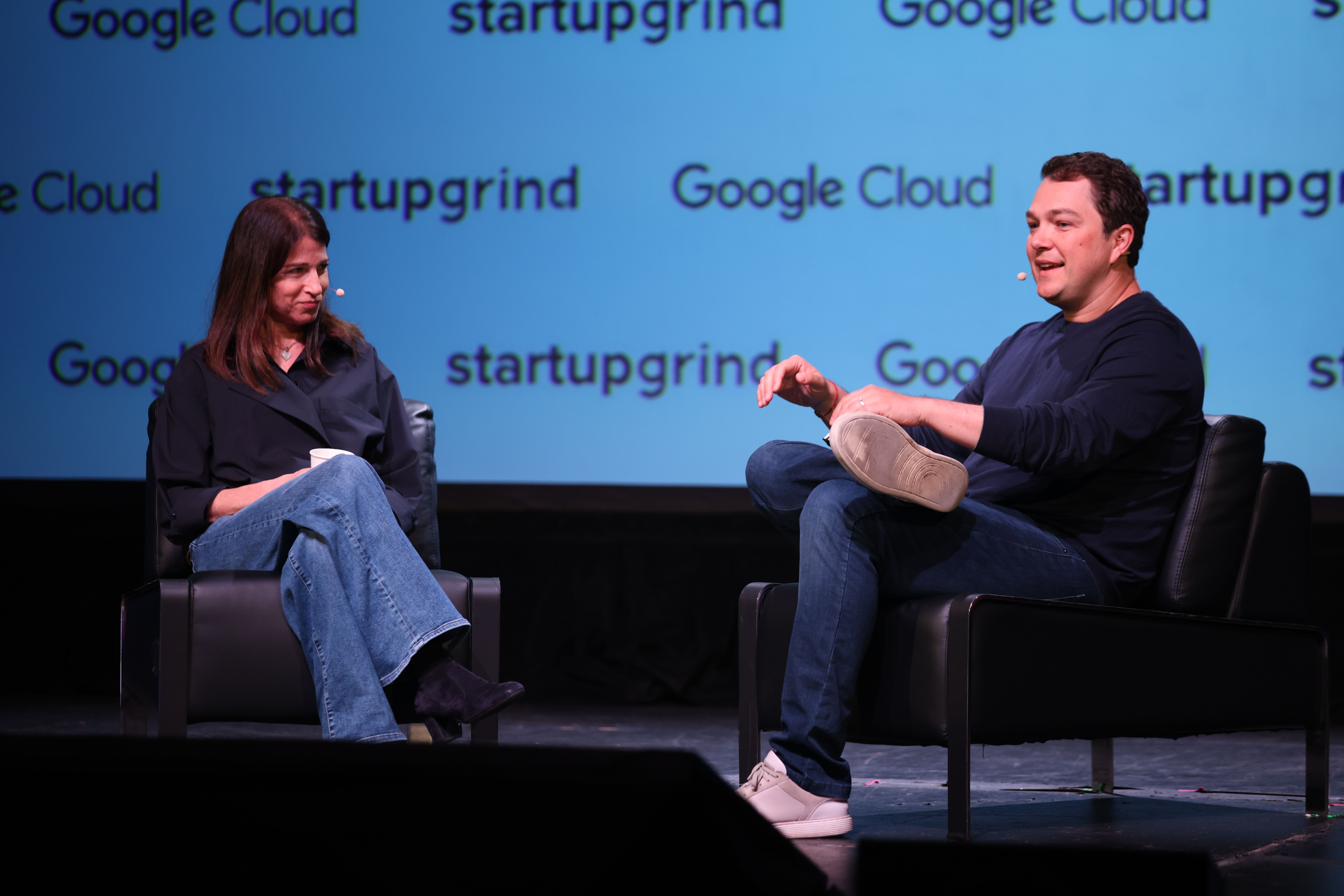Index OnAir: The Evolution and Future of Open Source

Companies built around open source are finding new ways to win over big business — and fight off ruthless competition from Amazon. CNBC technology reporter Ari Levy talks to Confluent President of Field Operations Erica Schultz, Cockroach Labs CEO and Co-Founder Spencer Kimball, and Index Partner Mike Volpi about the future of the sector, and why the shift to cloud-based infrastructure has only just begun.
Ari Levy: How have Confluent and Cockroach Labs had to change plans as a result of Covid-19?
Erica Schultz: Confluent has experienced quite a bit in the last seven months. There’s a proliferation of Kafka in the world, and broad adoption across several hundred thousand organizations including Fortune 500 global companies. We’ve taken open-source adoption and used that to help companies build a managed fully cloud service that supports Kafka and event streaming. It’s a more production-ready architectural standard, and more scalable and secure.
Before Covid-19, we were studying opportunities for growth in financial services, insurance and retail, as well as new geographies. We’re executing against that plan, and investing in bringing our cloud service to market — that’s a relatively new service and the fastest growing part of our portfolio. We wanted to make sure we’re helping our customers solve their most pressing challenges, and a managed cloud service means they don't have to worry about spinning up their own infrastructure and hiring.
Many of our customers have accelerated their digital transformation projects. We started to lean into customer use cases like 360 inventory, or real-time fraud detection for banks, making sure we had clear value statements for our customers. This has helped make Confluent a business-critical technology partner that is above the cut line.
We also reexamined our business model to make sure our pricing aligned with customers. We had bet on pay-as-you-go and usage-based billing, rather than asking for big up-front commitments based on sales forecasts. That was a smart bet.
Spencer Kimball: Companies often run the relational database themselves because of the infosec requirements, so Cockroach’s business has been on-premise or self-hosted. Most companies are more familiar with that model, especially big companies running Oracle or SQL servers. That's been our business, and it would be crazy to ignore that and go head-to-head directly with Amazon in the growth segment.
But things are changing. With Covid-19 we've seen increasing interest from bigger enterprises including Global 2000 and Fortune 500 companies who are asking if we’re SOC 2-compliant and can run in Azure, GCP, AWS, or even across the clouds. Things that weren’t part of the vision for the future even three months ago are now being actively sought after, so we’ve definitely seen acceleration in the whole program around replatforming. Companies consider Cockroach to be a crucial investment, and not something being delayed by Covid-19.
Lockdown provided an opportunity for us to take a step back and look critically at our processes, at our growth and at the efficiency of our sales model. We’ve moved to an agile headcount plan instead of a strategic plan, and we’re looking at how we can increase efficiency. When you’re a young company that grows quickly, you have a tendency to rush to hire because you’ve got investment and you want to deploy quickly.
Ari: How challenging is it to sell an open source-based service today?
Spencer: The idea of going through procurement to buy software became the dominant paradigm in the 2000s because it was simpler and faster to value. Nowadays, a cloud service provides a much better time to value. That's where the next generation of infrastructure is going to exist.
Our goal is to figure out the best of the open-core model, which is really time to value, and bring that to the cloud as a service. So how do we change the cost structure and really think about services being open, being across the cloud and perpetually free? That’s the future of the open-core model.
Ari: You worked in a top-down sales environment at Oracle, and then moved to New Relic, which was a pioneer in selling to groups that proliferated within small companies. What’s Confluent’s sales strategy?
Erica: New Relic opened my eyes to the power of organic, bottom-up developer adoption and how that makes your product an acceptable standard in the market. You couple that with top-down selling, speaking to a CTO or head of engineering who are evaluating software developers already love. They will want to know that it has the right security, governance and scalability. That’s what we’re striving to balance at Confluent too, making sure Kafka gets wide adoption in the market and that the on-ramp through Confluent Cloud is easy. We want to meet customers early on in their adoption cycle.
Ari: Is it hard to sell at the highest levels of big companies?
Spencer: When we first went to market in 2018, we weren't really sure whether larger companies would be interested, given their extreme investment in other databases over the years. There can be hundreds of thousands of Oracle instances at a big bank, for example. But interest in migrating to cloud native platforms is high, including in those big companies, and Cockroach represents a very distinct new opportunity for doing that. Larger companies are interested in new technologies, and they’re replatforming by using Kubernetes, Kafka, and Microservices. They’re thinking about a database that will work well through the 2020s.
Ari: How has enterprise infrastructure changed in the past decade?
Mike Volpi: The explosion of scale of the web highlighted all the limits of classic infrastructure. For a relational database, the only way to make a bigger one is to get a larger disk and a faster processor, so once you got to a scaling limit you were blocked. Smart people like Jay at Confluent and Spencer at Cockroach understood that we needed to operate on internet scale, and that meant rethinking how software is built. The shift from pre-internet to post-internet created a whole new generation of enterprise infrastructure.
Spencer: Scale was a huge catalyst for the reinvention of infrastructure as it existed pre web, but there's a new one coming that we're betting on for the 20s and beyond and that’s the idea of truly global services. Uber, Facebook, Netflix and Google have all built global data architectures to give customers what feels like a local experience, no matter where they are. You can’t have Australian users jumping all the way to Virginia for their requests if you want instantaneous interaction.
Facebook spent millenia — more than 1,000 years of engineering effort — building its distributed data architecture. That’s something that is going to democratize naturally as services like Cockroach and others start to make tools available in the public cloud. That will be within the grasp of every developer, but all this infrastructure has to be reimagined for this next inflection point.
Erica: Anytime you have that big kind of architectural shift, open source is such a great fit because it enables broad adoption and proliferation in the market. For these platform layers, developers and companies want to make bets on things that are open, popular and widely used. The alternative would be encouraging a technology team to make a big architectural change from the top down, and that's just a harder approach.
Developer-relations are critical. Ultimately we want to have a really strong presence in the community, and we want Kafka to be widely available so people can get trained up. Being able to meet developers where they are is super important.
Ari: How much of a challenge does AWS present to open-source companies?
Mike: The big open-source projects like Linux or MySQL were designed by a broad base of community developers working outside companies, and they would add to it through a central controlling body and the open-source software group. Amazon initially used those — EC2 is based on Linux, and they have a MySQL or a Postgres offering. That was all good.
As the world figured out a business model around open source, Amazon began taking the software and self-hosting it on behalf of people. These smaller companies were trying to accelerate the progression of open source and make it a sort of a hybrid model. You’re now seeing a tension in the market because Amazon has been capitalizing on the value created by other companies.
The only answer is that licensing is going to change. Open source will become more of a commercial business model, with newer companies essentially disabling Amazon from using their product as a free thing. That will cause some friction with hardcore open-source people, but it's a reality of the capitalistic world. Five years from now, it’s going to be harder for Amazon.
Spencer: AWS grew up with high-growth tech companies and has dominated that, but big companies are moving to the cloud en masse. There’s a tipping point there, and big companies don’t like the vendor concentration risk of AWS. If AWS is to attract hundreds of millions of dollars from those companies they can’t be schilling products the way they have been. Instead, they simply need to offer the best software.
Erica: The bulk of enterprise workloads have yet to move to the public cloud, so most customers are going to be living in a hybrid environment for a period of time. Secondly, customers don't want all their eggs in one basket, so they look at multiple cloud providers. One of our strategies is to excel in that hybrid and multi-cloud environment, and be the streaming data platform across those environments.
We recognize that each of the major cloud vendors have some sort of messaging offering. Amazon has an offering based on Kafka, but it's not a fully managed service. Confluent has to have the best product on the market and earn customer choice, not only through our technology but by having the best expertise around Kafka. That's a big part of our value proposition.
Ari: Tell us about Cockroach’s licensing model, and how that helped you compete with AWS.
Spencer: Our core assumption was that a big company like Google or Amazon wouldn’t seek to compete directly with a smaller company that was stewarding an open-source project — but we were wrong. Some companies have struggled against Amazon because it used their open-source products and pushed them through their own platform. AWS took not only the open-core part but also started reimplementing enterprise features. I don’t think Google would do that — it’s just part of their company culture not to do things like that. But Amazon doesn't have those values. They obsess about the customer and from that perspective, it's good to give them whatever Cockroach or another open-source startup is offering.
We decided to use something that MariaDB came up with called the BSL, or business source license. It gives a kind of a patent protection, and we set the term for three years after which the core becomes Apache. That means it leaves an open-source legacy. The BSL is exactly like Apache, with the exception that you can't offer Cockroach core as a database-as-a-service to external customers in a commercial setting — that’s our anti-AWS RDS exclusion. But you can fork it, all the code's available, and you can run it internally. Amazon could take a three-year old version of Cockroach and compete with us directly, but Cockroach will have progressed a lot in three years. It levels the playing field. We’ve had to explain it to customers sometimes, but they understand why we’re doing it and they support us.
Ari: What advice would you give an early stage open-source company?
Spencer: The successful open-source companies were fairly established before commercialization started. We took a different route: Cockroach had a project there was interest in, but it wasn't even in alpha. It required huge investment in R&D to get it looking like a true enterprise-grade, production-ready system. You could argue we still have work to do to get there, and maybe in ten years we’ll still have work to do. It's just a very big goal. We also have to educate the market and support early open-source projects so they can grow and strengthen the sector, as well as build community and build users.
It would have taken some risk off the table for everyone involved if Cockroach had had more gestation before we started building the company. But what made Cockroach palatable to early investors was the really big market.
Mike: There weren’t many open-source investors six or seven years ago, because why would you invest in a business that gives away its core product for free?
Today, new investors love vanity metrics, like how many GitHub stars or downloads, or how busy their Slack channel is. But it's also essential to understand what this project is doing and why it is important. Confluent is interconnecting all forms and shapes of data inside an enterprise. When I first saw it, I understood it was the freeway system for data inside a corporation. And once you put in a freeway system it doesn’t move, so this has huge longevity and becomes a critical asset. Cockroach is a relational database, which is the most common database on the planet. Everybody uses them, and yet there hasn't been a new one since about 1986 — instead we've invented all these newfangled databases because of the limitations of classical relational databases.
Ari: Both Confluent and Cockroach raised large rounds recently. How did the pandemic impact that?
Erica: We raised a Series E right in the middle of Covid-19. We were already committed to reducing our burn rate to enable more efficient growth but now it’s super important.
Covid-19 has given us that lens of reexamining the bets we’ve made, making sure we double down on the things that really matter. Macro-environment challenges are an opportunity to make hard decisions faster. It's forced us to be more decisive and more aggressive in focusing on our growth bets.
Spencer: It was probably the worst time in the last ten years to raise. We‘d started just before Covid-19 hit and it was a pretty difficult situation to be in. But we’ve come to see financing as a big opportunity to assess our approach, how we're going to spend money and how we're thinking about our three and seven-year plans.
Ari: Are you actively investing, and what’s the outlook for IPOs in the second half of the year?
Mike: The financing climate has been slow at the early and Series A stage. Potential entrepreneurs are concerned about stepping away from Google or Facebook because the climate is so uncertain. For later-stage companies it’s pretty lively, because going into Covid-19 everyone battened down the hatches.
But although the market as a whole is down an average 15-20%, no company is average. What we’re really seeing is a bifurcation: some businesses are truly struggling, and some are benefiting. Those companies are actually seeing a push from their customer base to digitize. Investors have figured that out and are proactively going after these companies.
On the IPO side there’s a lot of investor interest. We've seen a few successful ones, and there is still a pipeline out there, mostly from businesses that have benefited from Covid-19. We don't know what the end of the tunnel looks like, but we’re going to see the markets open up a little bit.
Ari: How do you assess the value of an open-source company?
Mike: When you're investing in early open-source companies, you definitely want all the primary contributors to that code base to still be working at the company. Without that, it's hard to catalyze a community that will keep the project going in the right direction.
The second thing is that the majority of open-source self-hosted users don’t pay. I'd be surprised if even 10% of a userbase pays, so if you're monetizing a smaller portion of the overall user universe, you've got to make sure that the universe is really big.
The last clue you're looking for is open-source projects that contain a lot of data. Traditionally, things like databases are the projects that tend to be easier to monetize, because the customer can count the number of nodes. The more nodes, the more they pay you.
Late-stage investing is pretty straightforward. You can see the metrics of the business, whether it is growing in adoption, and whether there’s a large community with customers adopting both top-down and bottom-up. You have a lot of information to help you assess the business, so then it’s just an issue of whether the valuation is worth it.
Ari: Since Zoom and Slack went public with virtual roadshows, is there now a blueprint for going public without meeting investors face-to-face?
Mike: Management teams usually fly around for two weeks on red eyes and kill themselves for one-hour meetings. Now they're just going to get on Zoom and talk to investors. It's probably better because both sides are more coherent. There may be one roadshow stop in New York and a couple of other markets, but it will be more rational than 17 cities in 3 days.
Spencer: We thought we’d struggle during Covid-19 because we have direct sellers that get on planes to visit customers. That’s how they build relationships. But we’ve seen some really unlooked-for efficiencies. People are much more willing to take meetings, and things like workshops where we used to get 25 people in a room we’ve now had 130 people from all over the country. That’s significantly more efficient than in-person meetings. It’s a brave new world.
Published — July 17, 2020


